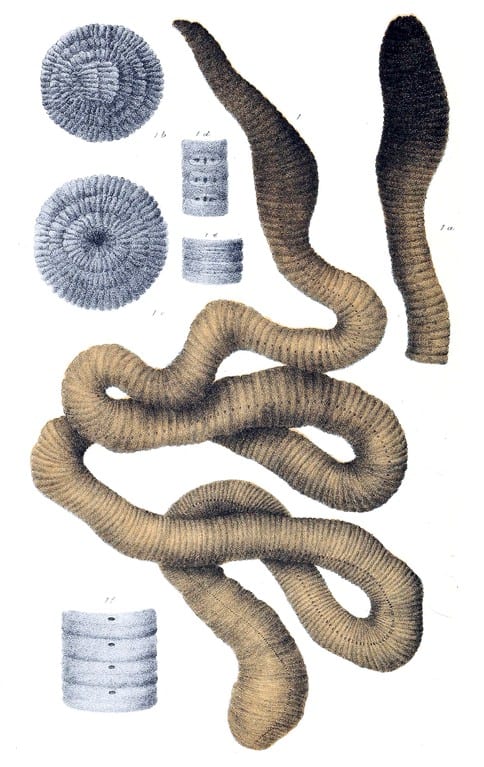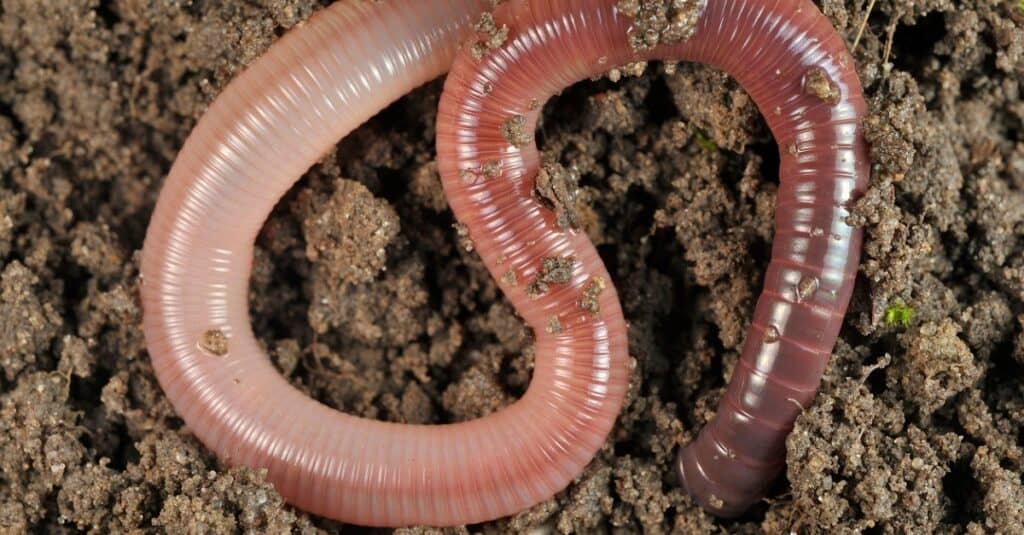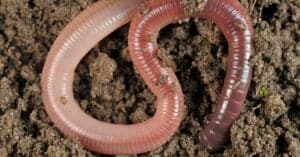All animals are fascinating in their own way. However, it can be particularly fascinating to learn about the largest species in any group. It’s interesting to think about how they ended up being so much larger than their counterparts and simply to learn about them.
Worms are just one example. Even though they might seem like humble animals at first glance, they actually do a lot for the ecosystem. The way their anatomy works is also quite impressive when you take the time to learn about it.
Keep reading to discover the largest worm in the world!
The Largest Worm in the World

The largest worm in the world is the giant Gippsland
earthworm
, which can grow to be 9.8 feet long.
©Arthur Bartholomew (1833—1903) / public domain – License
The largest worm in the world is the giant Gippsland earthworm (Megasolides australis). On average, this worm is about 3.3 feet (1 meter) long and 0.79 inches (2 centimeters) in diameter. It often weighs up to 0.44 pounds (200 grams).
Giant Gippsland earthworms have a relatively long lifespan, living up to five years or even more. During this time, the longest of the species can grow up to 9.8 feet (3 meters) long. Given that the average earthworm is about three or four inches long, these worms are truly enormous! They are by far the largest worm species on Earth.
In fact, the people who originally discovered this worm in the 1800s didn’t even think it was a worm. Workers who were evaluating a rail line accidentally unearthed one. They thought it was some sort of new snake. These workers took the worm to a professor at the University of Melbourne, who told them that, surprisingly, it was a worm!
Habitat of the Giant Gippsland Earthworm

Earthworm in soil.
©iStock.com/K-Kucharska_D-Kucharski
Giant Gippsland earthworms are only found within an area of 150 square miles in the Bass River Valley of South Gippsland in the state of Victoria, Australia. They are very rarely seen above ground, spending the vast majority of their time deep under the surface. In fact, they can reach depths of about 5 feet underground.
In fact, the only time they are seen above ground is during times of heavy rainfall. This is only because their underground burrows become flooded during these periods of inclement weather. These worms have high amounts of hemoglobin in their blood that allow them to handle low oxygen levels underground.
These giant worms are quite impressive in their ability to continue to thrive in a landscape that has been completely altered by humans. Their habitat was once covered by dense temperate forests, and they have now been converted to farmland. The native vegetation of the area has also been taken away by humans.
Problems with the Worm’s Habitat
Although these worms have been able to thrive fairly well in their natural environment despite the changes that humans have made, the changes have not been good for them. In fact, they are now considered to be an endangered species.
The worms are exposed to all sorts of toxins that are typical of farming practices, and they are more vulnerable to physical injuries than other worms just because of their size. Additionally, heavy planting on the soil removes all of its moisture and makes it an unsuitable environment for the worms.
The giant Gippsland earthworm is a protected species. Even though you may be tempted to dig them up in order to see them, handling them the wrong way could be fatal to them. If you happen to be in this area, the best thing you can do for these worms is to leave them alone.
Diet of the Giant Gippsland Earthworm
Giant Gippsland earthworms generally consume roots and other organic matter underground. They feed on algae, bacteria, fungi, and other microbes. However, it might sometimes poke its head above the surface and feed on plant material there as well.
These worms do not have teeth. However, they have gizzards that are filled with small stones that they use to digest food. They typically defecate underground, while most worms do so above the surface. Their wastes are referred to as castings, and they use the castings to block their burrows. This makes them even harder to find.
Life Cycle of the Giant Gippsland Earthworm
The giant Gippsland earthworm has both male and female reproductive organs, making it hermaphroditic. However, two individuals are necessary for fertilization. A clitellum has been observed on some of these worms; this is a thick ring found in the skin of the worm that is the site of cocoon production.
Most breeding activity of these worms takes place in the spring and summer. Because it happens underground, scientists don’t know the full process. However, they hypothesize that the worms narrow and lengthen their bodies so that two of them can fit in the burrow side by side.
Another reason to preserve the populations of worms is that, in addition to the current threats to their survival, they are not particularly prolific. They grow and reproduce very slowly, only producing one egg per year that has an incubation period of about 12 months. Scientists believe they take up to five years to even reach reproductive maturity.
The egg capsule is 1.6 to 3.5 inches (4 to 9 centimeters) long and 0.79 inches (2 centimeters) in diameter. Typically, the egg capsules are present at a depth of about 9 inches (23 centimeters), although they can often occur even closer to the surface.
Movement of the Giant Gippsland Earthworm
Giant Gippsland earthworms have muscular heads, which they use to burrow through the ground. These worms move by alternating between expansion and contraction of their ends at the head and tail.
Because of the sheer size of these worms, if you’re walking around on top of their habitat, you’ll actually be able to hear them as they try to move away from you.
They move very quickly, and the soil through which they burrow is very wet, making their movements audible. It’s a loud, gurgling sound that has actually scared people who are unfamiliar with these worms!
The photo featured at the top of this post is © iStock.com/K-Kucharska_D-Kucharski
Thank you for reading! Have some feedback for us? Contact the AZ Animals editorial team.






